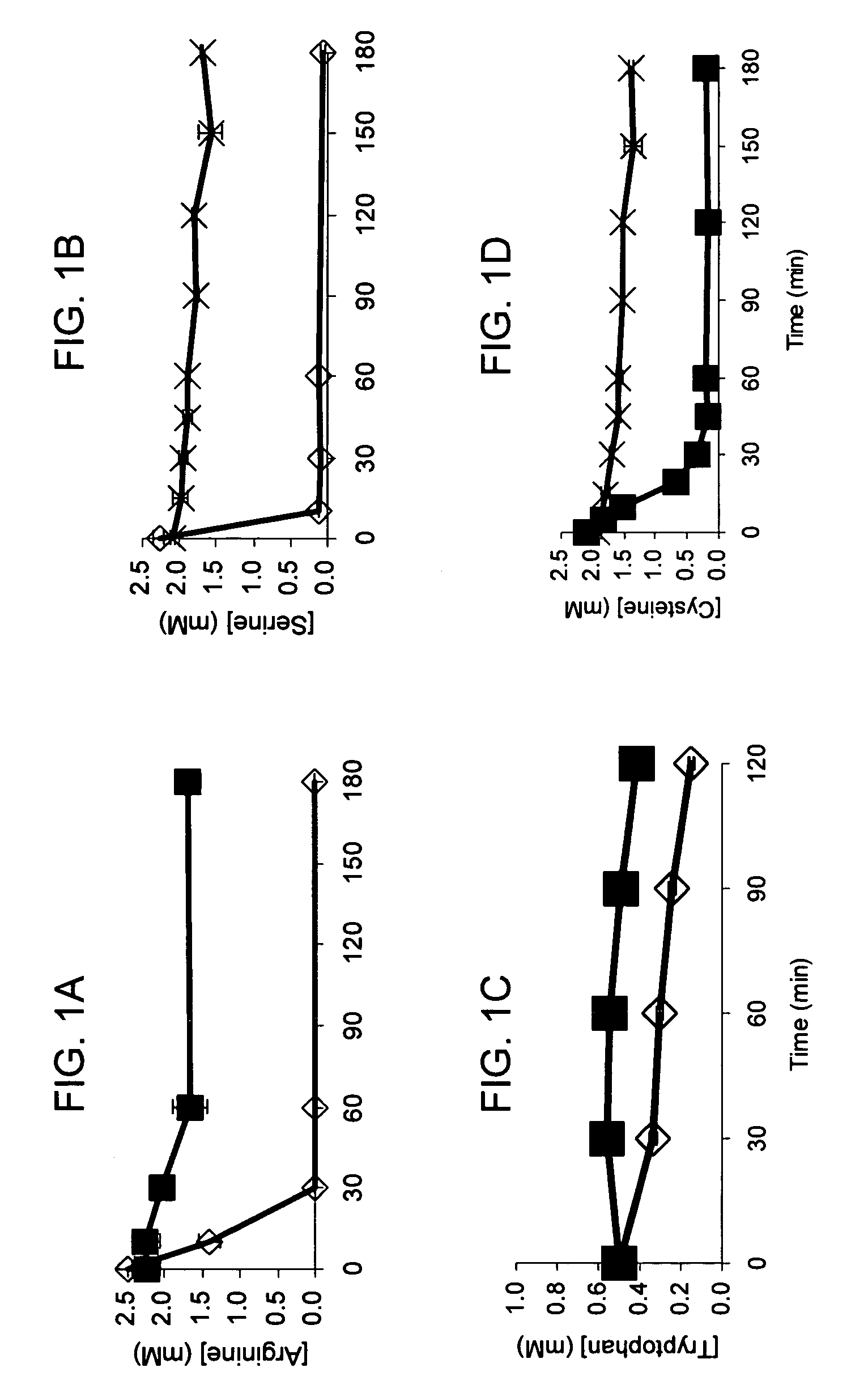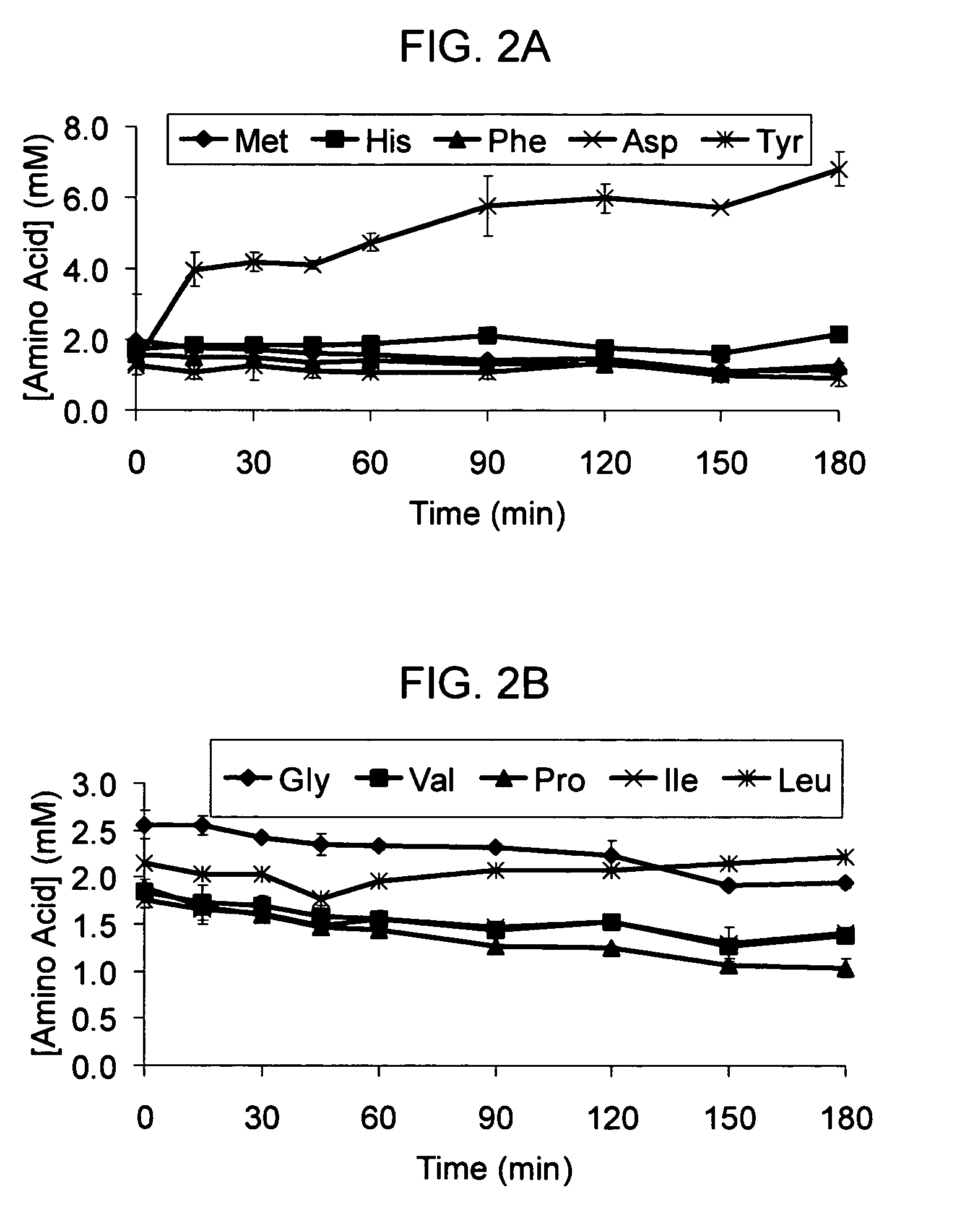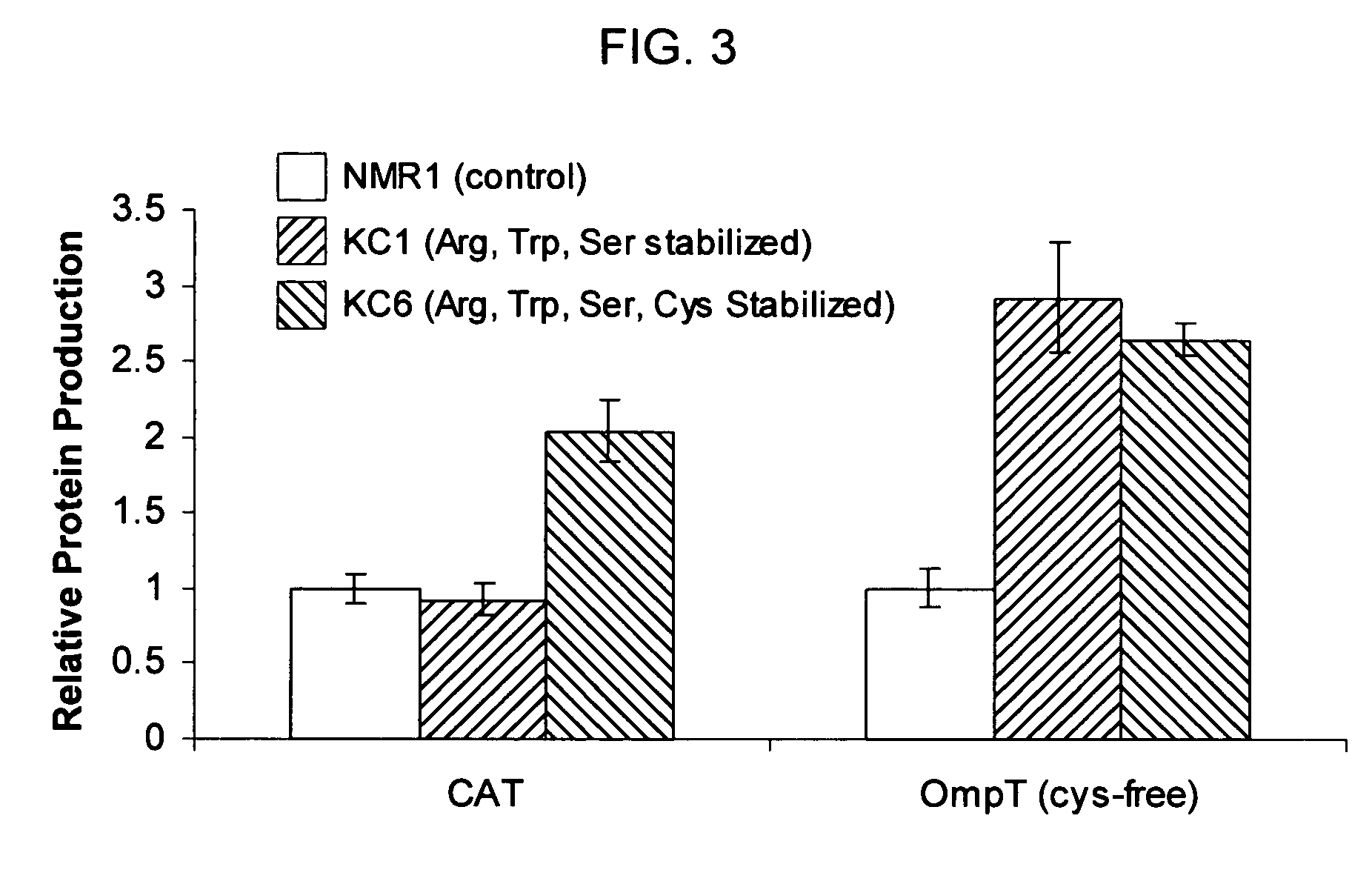Total amino acid stabilization during cell-free protein synthesis
a technology of total amino acid stabilization and cell-free protein synthesis, which is applied in the direction of lyases, ligases, enzymology, etc., can solve the problems of undegradable degradation of amino acids in the reaction mix of conventional microbial strains, and achieve the effect of improving the yield of protein
- Summary
- Abstract
- Description
- Claims
- Application Information
AI Technical Summary
Benefits of technology
Problems solved by technology
Method used
Image
Examples
example 1
[0045]The standard cell-free reaction mixture used for the coupled transcription-translation reaction is the PANOxSP system as described by Jewett, M. C., and Swartz, J. R. (2004) Biotechnol Bioeng 86, 19-26 with slight modifications. The specific components of the reaction include 30 mM PEP, 1.2 mM ATP, 0.86 mM each of GTP, UTP, and CTP, 130 mM potassium glutamate, 10 mM ammonium glutamate, 16 mM magnesium glutamate, 34 μg / mL folinic acid, 170.6 μg / mL E. coli tRNA mixture, 13.3 μg / mL plasmid, 50 mM HEPES (pH 7.5), 1.5 mM spermidine, 1 mM putrescine, 2 mM each of 20 unlabeled amino acids, 5 μM [14C]-Leucine, 0.33 mM nicotinamide adenine dinucleotide, 0.26 mM coenzyme A, 2.7 mM sodium oxalate and 0.24 volumes of E. coli S30 extract.
[0046]The cell-free protein synthesis reaction is performed with a crude S30 extract derived from various E. coli strains. These A19 derivatives have genotypes as listed in Table I. Several of the deleted genes code for enzymes directly responsible for ami...
PUM
| Property | Measurement | Unit |
|---|---|---|
| temperature | aaaaa | aaaaa |
| temperature | aaaaa | aaaaa |
| pH | aaaaa | aaaaa |
Abstract
Description
Claims
Application Information
 Login to View More
Login to View More - R&D
- Intellectual Property
- Life Sciences
- Materials
- Tech Scout
- Unparalleled Data Quality
- Higher Quality Content
- 60% Fewer Hallucinations
Browse by: Latest US Patents, China's latest patents, Technical Efficacy Thesaurus, Application Domain, Technology Topic, Popular Technical Reports.
© 2025 PatSnap. All rights reserved.Legal|Privacy policy|Modern Slavery Act Transparency Statement|Sitemap|About US| Contact US: help@patsnap.com



